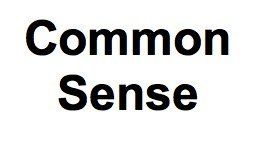Primary Election Turnout, Eastern Shore Counties

Compared with general elections, voter turnout for primary elections is usually lower. Conventional wisdom says that the most committed voters — those with the strongest views — are the ones who vote in primaries to choose their party’s nominees for elected office. But to many folks, primary elections often lack the urgency of general elections, so they feel there’s less reason to vote.
The Maryland State Board of Elections recently released voter turnout data by political party from the July 2022 Gubernatorial Primary Election. The data are available by county and by congressional district.
This article looks primarily at the Democratic and Republican parties. Those parties had candidates for statewide and local offices (governor and lieutenant governor, attorney general, comptroller, states attorney, councilmembers and commissioners, various judges, etc.) vying for the party’s nomination to run in the general election. The only candidates on the ballot for unaffiliated and third-party voters (Greens, Libertarians, Working Party, Other) were non-partisan county Board of Education candidates, so turnout by these voters was very low in most counties, and non-existent in counties where there was no school board election (Caroline, Somerset, Talbot, Worcester).

Seven Eastern Shore counties had Republican turnout (percentage-wise) that was higher than Democratic turnout. The two exceptions were Kent and Queen Anne’s counties.
In Kent County, turnout for the Democrats was 42% and for the Republicans, 41.5%. The Democrats have a registration advantage in Kent, with 5,819 Democrats registered and 5,196 Republicans, a difference of 623 voters. There were 288 more votes cast by Democrats than by Republicans.
The other exception was Queen Anne’s County, where Democratic turnout was 34% and Republican turnout, 32%. In Queen Anne’s, however, there are many more Republicans: 19,412 Republicans registered and 11,021 Democrats. So, a lower turnout percentage amounted to a higher number of votes cast. Republicans cast 6,148 votes to the Democrats’ 3,696 — an advantage for the Republicans of 2,452 votes.
Kent County had the highest turnouts for both parties (42% Democratic, 41.5% Republican). Lowest turnout was 18% in Somerset County for Democrats and 29% in Cecil County for Republicans. Statewide, Democratic turnout was 30.8% and Republican turnout was 30.5%.

Across the nine Eastern Shore counties, there were 110,337 eligible Democratic voters and 135,579 eligible Republican voters. Democrats cast 30,293 votes and Republicans cast 45,575. Democratic votes cast by county ranged from a low of 1,023 in Somerset to a high of 6,326 votes in Wicomico. Republican votes cast ranged from 2,160 in Kent (and 2,164 in Somerset) to 9,097 in Cecil.

Turning to Maryland’s first congressional district, the choice of method of voting mirrors what is seen on a statewide and national basis. More Republicans voted on election day (52%) and a lower percentage voted by mail (25%). Democrats, however, split voting equally between election day and by mail, at 40% for each method. About equal percentages of Democrats (18%) and Republicans (19%) chose early voting.


Maryland congressional districts were redrawn for this election cycle, based on the 2020 Census. A court challenge rejected the map adopted by the legislature, calling it gerrymandered. That map would have, among other things, given Democrats a distinct advantage in the 1st District by including part of Anne Arundel County at the western Bay Bridge terminus, and excluding Harford and Baltimore counties. The final map, approved by the court, makes the Maryland First District more competitive than it was from 2012-2020, but still gives the advantage to Republicans.

For the primary election, there were 233,723 eligible Republican voters and 190,250 eligible Democrats. The number of eligible unaffiliated and third-party voters is understated in the chart because there were no contests in four counties (Caroline, Somerset, Talbot, and Worcester) for voters in those parties; therefore, those parties had no eligible voters for the primary.
In District 1, Democrats cast 54,716 votes and Republicans cast 81,613.
If the reasonable voters in MD-01 want to deny the incumbent ultra-right-wing congressman, Rep. Andrew P. Harris, another term, two things must happen. Unaffiliated and third-party voters must be persuaded to vote for his challenger, Heather Mizeur, and it would help if some rational Republican voters crossed over to vote for her. And Democrats must be persuaded to turn up at the polls.
Conventional wisdom also says that nationally, the party in power will experience losses in the midterm election. Democrats’ chances to hold onto the House and Senate looked grim until recently, but things are looking up — as long as we can get out the vote!
Jan Plotczyk spent 25 years as a survey and education statistician with the federal government, at the Census Bureau and the National Center for Education Statistics. She retired to Rock Hall.
Common Sense for the Eastern Shore







